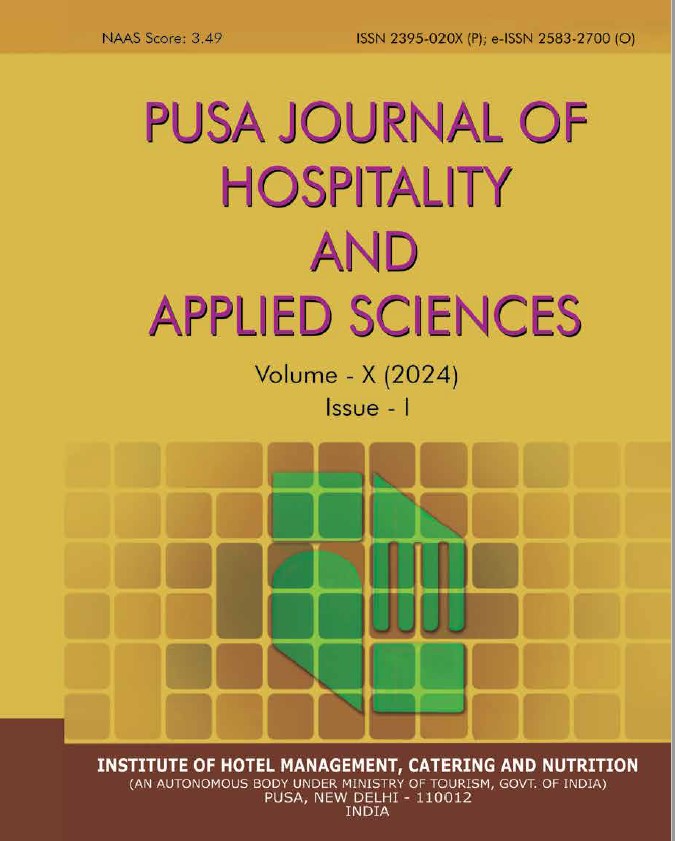Role Of Amusement Park In Value Addition To The Tourist Place: Case Study Of Chail, H.P.
Keywords:
Tourism, Amusement park, Theme parks, ChailAbstract
Background: Tourism is a social, cultural and economic phenomenon which entails the movement of people to countries or places outside their usual environment for personal or business/ professional purposes. Tourism helps to assimilate culture and social bondage. Theme parks and amusement parks are very good tourist attractions. An amusement park is a combination of thrill rides, roller coaster rides, family rides, water attractions or rides in darkness in a covered train. Chail, a tourist destination in H.P is one of the popular tourist destinations. Opening an amusement park will help to attract more tourists. Objective: To identify the feasibility of opening a Amusement park in Chail, H.P. Methodology: The research instrument used was a questionnaire was 30 tourists visiting Chail. Results: Around 86% of the tourist population agreed that provision of Amusement Park would give opportunity to development of Chail and of the state overall. 76% agreed Amusement Park will be a value addition to Chail and help in the economic and financial upliftment of the state. Conclusion: Value addition of Amusement Park in tourist places would help in social and cultural development of the state. Such leisure activity acts as strong magnet for tourism industry.
References
About Chail. Retrieved from http://hptdc.nic.in/cir0104.htm
Amusement Park & Theme park Retrieved from https://prezi.com/k2jijsit7ciq/untitled-prezi 3. Amusement Park. Retrieved from https://www.tititudorancea.net/z/amusement_park.htm 4. Amusement Parks Market Research Report | NAICS 71311 | (2016, 4). Retrieved from (http:// www.ibisworld.com/industry/default.aspx?indid=1646)
Bhatia, A. K (2006). International Tourism Management.Sterling Publishers Pvt. Ltd. (pp. 461). 6. Das, P. K. (2014). Mass Tourism & Environ- Infrastructural Crises of Shimla City: A Case Study. International Journal of Science and Research (IJSR), 3 (11), 1.
Goeldner, C. R. & Ritchie, J.R. B. (2000). Tourism-Principles, Practices, Philosophies. John wiley& sons. (pp.13)
Hetter, K. World’s top 25 amusement park. Retrieved from http://edition.cnn.com/2014/06/04/ travel/most-popular-theme-parks-world
Howell, D.W. (1989). The Recreation & leisure system. Passport- An Introduction to the Travel and tourism industry. South-Western Publishing Co.
Hu, G. (2013). A Research Review on Theme Park. Business and Management Research, 2(4), 1. 11. Hunziker, W. & Kurt. (1942). HassoSponde. (In) Gunther Haehling (ed.): Tourism-Management. Berlin.1998
Inskeep, E. (1991). Tourism Planning- An integrated and sustainable development approach. Van Nostrand Reinhold, 76-89.
Kruczek, Z. (2011, 3). Amusement Parks As Flagship Tourist Attractions Development and Globalization. Economic Review of Tourism, 4.
Pubby, V. (1996). Shimla Then and Now. Indus Publishing. (pp. 17–34) 15. Raina, A. K. (2005). Ecology, Wildlife and Tourism Development: Principles, Practices and Strategies.Sarup&Sons ,45.
Sun, L. &Uysal, M. (1994). The Role of Theme Parks in Tourism. Hospitality Review, 12(1), 2. 17. Top 12 Famous Amusement parks in India. Retrieved from http://www.walkthroughindia.com/ walkthroughs/top-12-famous-amusement-parks-india
Tourism. Retrieved from http://cf.cdn.unwto.org/sites/all/files/Glossary+of+terms.pdf 19. Tourism. Retrieved from http://www.univeur.org/cuebc/downloads/PDF%20carte/65.%20 Manila.PDF
Tourism. Retrieved from http://shodhganga.inflibnet.ac.in/bitstream/10603/33056/8/08_ chapter%201.pdf




